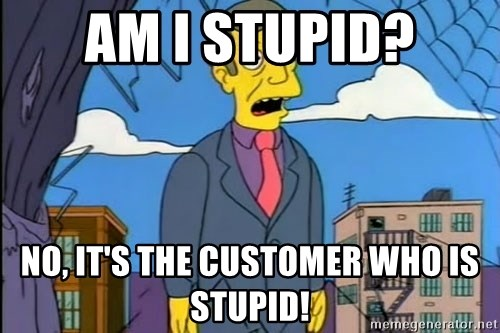Navigating Through These Troubled Times in eCommerce
Everybody is hurting right now. Well, nearly everybody. Working for an established performance agency, you get to see a 10,000-foot view of what is happening in the market across many different categories and businesses. It’s a question often asked in the market and by clients, “What else are you seeing out there?” and “Who is doing things well and getting it right?”
It’s now axiomatic knowledge that consumer sentiment has virtually fallen off a cliff, and many business owners are scrambling to better navigate through these extremely choppy waters.

This isn’t a magic panacea, and every business has different pain points, but If you are selling products online (or offline), these are the ways you can help to future-proof your business.
Table of Contents
Lower Your Eyes After Having Raised Them
The days of “easy money” are over with fewer Government hand-outs to businesses and employees alike (and less leniency from the ATO now for monies owed and budgets deep in deficit). So, maybe selling products at large net profits is no longer viable (for now). Costs are going up, from logistics to wages to rents, but with your digital performance channels previously seeking a ROAS (return on ad spend) of, say, an 8 or a 10+, to meet all your cost requirements, perhaps the importance should now be placed on not just holding, but increasing market share through lowered ROAS goals and taking the short term profit hit. Many case studies have shown that brands that responsibly continue their brand efforts through challenging periods and great recessions come out even stronger than their competitors, who bunkered down and saw their brand resonance lower dramatically.
If you are close to your customer data, measure ‘clean and glean’ customer segment data, i.e., repeat customers, lapsed, etc., and measure the average annual or LTV of these customers, then consider this. Run some campaigns that are a mixture of the upper funnel (brand introduction) and performance (conversion focussed). YouTube is an excellent channel here for this, where there is a healthy combination of awareness mixed with a call to action utilizing your product feeds (which I discuss below). Just focussing on bottom-of-the-funnel activity is a sure way to suffocate your account.
The longer-term benefits to the business will be a considerably net positive. It’s not dissimilar to a loss-leading product in a supermarket. You know you take the short-term hit, but you’re getting an overall increased AOV.
Feed Hygiene
Look at your product feed. Does every single product need to be in there to be promoting ads? What about low-priced products, i.e., < $15? Do you really want to pay for clicks on these small-dollar profit products? Have you bucketed your product feed and labeled them by profit margins? The best SEM (Paid Media) agencies or internal Paid Media Managers are not just ROAS focussed but profit-focused. Every product should be categorized by profit to determine how aggressively you bid for them, not clustered with everything else as a one-size-fits-all.
Caption: Example of a Feed Management tool; Feeditor.

Quality of Website Experience
This is a conversation often had with clients and business owners. Your agency Does. Not. Create. Magic.
Suppose you offer a horrible site experience that is hard to navigate, instill any trust, offer competitively priced products, simplify the payment/ check-out, or offer acceptable delivery options. In that case, you are hemorrhaging money on paid traffic. Take a client looking to impart blame on their conversion rates; it was revealed that the real issue was with them having a tight account set up that was delivering intent traffic from Exact Match (meaning, exact word syntax and no obviously misspellings or synonyms) keywords specific to the product (including their brand name!) they were selling, and still, they couldn’t convert. So the old maxim played out; in other words, the horse was brought to drink water, but the water was sulfurous.
Re-Negotiate Product Costs/Expenses Where Possible
I know of businesses that are under extreme pressure and beholden to their wholesalers, having to buy huge amounts of product every month to ensure they keep their buying power by volume. The market has changed dramatically from 6 months ago. Work closely with your main suppliers and wholesalers and get them to work with you, knowing that when you are through this difficult period, their upside is much higher on the other end for them.
Every product should be categorized by profit to determine how aggressively you bid for them, not clustered with everything else as a one-size-fits-all.
Tracking
If you can’t trust your conversion data coming through, most likely, Google algorithms aren’t accurately targeting your business goals, i.e., CPC, tCPA, or tROAS. This goes without saying, but this continues to need reminding. Having your own house in order first is paramount. This includes properly setting up Conversions API and Aggregated Events within Facebook. Enhanced Conversions within Google and also using Google Ads tracking, rather than Analytics. We don’t recommend using Analytics tracking due to its limitations to only tracking last-click attribution rather than having a full view of all the attributes that drove the conversion.
Scale Down Any Unnecessary Breadth of Products
Winter isn’t coming, it’s already here. Review your product lines hard, and consolidate as much as possible. Many people within eCommerce are well aware of certain prominent big names who have over-bought their products and have been left paying huge costs to warehouse these products.

And Finally…
To paraphrase a famous line by a former US President. “It’s the customer, stupid!” Customers’ needs and wants are constantly evolving. From the way they buy, their user experience expectations, and the way they celebrate receiving a new product arrival. Treat every customer as a micro-influencer, as it’s your customer base who will help you reduce the need for heavy advertising every day. And they have the cheapest CAC.
Trending Articles
Get exclusive CMO tips that I only share with email subscribers.
Related Articles


